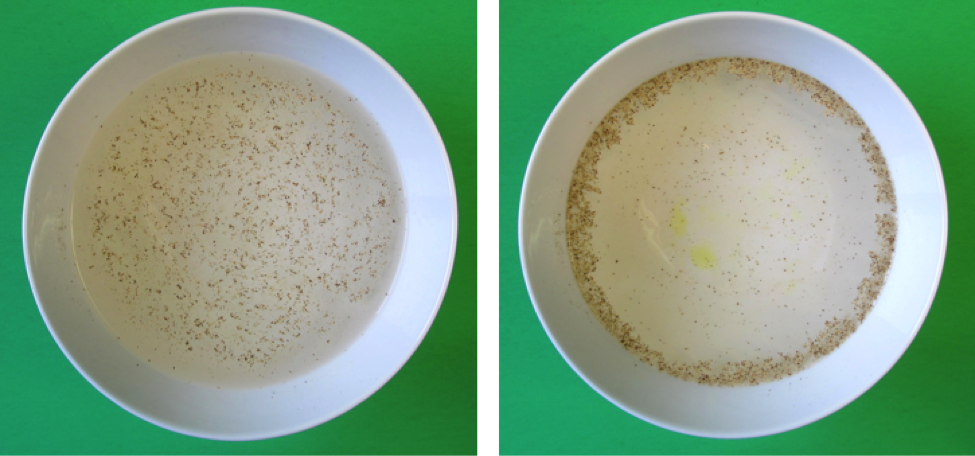Don Mercer
Dishwashing detergents are something we use frequently - yet we probably take them for granted, and never give a second thought to how they actually work.
Everyone seems to have a favourite brand that is lemon-scented, or is gentle to your hands, or has some other quality to set it aside from the competition. Regardless of these attributes, the main job of a detergent is to attack grease and oil on the surfaces of your dishes and get them sparkling clean again.
There is really a lot of chemistry going on right in front of us as we try to remove the greasy film from a casserole dish or a frying pan. The question is, “How do they do this?”
To answer this question, we need to look at the structure of a detergent molecule and how these molecules behave in water.
Basically, a detergent molecule is made up of a rather long organic compound whose ends are distinctly different. One end is “hydrophilic”, meaning that it likes water. The other end is “hydrophobic”, meaning that it dislikes water. We’ll come back to this important feature in a moment.
When detergent is added to water, it instantly disperses across the surface. This can be demonstrated by a rather simple experiment that you can easily do in your kitchen. All you need to do is to take a white bowl or saucer and partially fill it with water. Then, sprinkle a thin layer of fine black pepper over the surface. Don’t spread it too thick, or the effect will not be quite as dramatic. Once you have the pepper floating on the surface of the water, let a drop of detergent gently fall into the middle of the water. As the detergent spreads across the surface, it will push the pepper particles ahead of it. The end result is a ring of pepper around the outside of the bowl or saucer. This is shown in the accompanying photograph.
We have now shown how detergents change the surface properties of water. Because of this, they are classed as “surfactants”, or surface activating agents. This is all part of being effective at removing grease and oily films.
When detergents come into contact with oils, they definitely show the importance of having a hydrophilic end and a hydrophobic end. In order to get away from the water, the hydrophobic end of the detergent molecule embeds itself in the surface of the grease or oil. The hydrophilic end then points into the water around the oil. As more and more detergent molecules align themselves along the surface of the oil, they force the oil to form droplets which have a surface covered in detergent molecules with their hydrophilic ends pointing outwards into the water.
The coated oil droplets are prevented from clinging to surfaces and become dispersed in the water in your sink. As long as you do not overload the detergent by having too much oil for it to handle, you will get your dishes quite clean. If there is too much oil or grease present, you will just have to add more detergent, or wash them a second time in fresh water with a fresh shot of detergent.
Soap works the same way as detergent. However, soaps are usually milder than detergents since they are made for use on our skin. In addition, soaps tend to be made from naturally-occurring fatty acids, whereas detergents are made from synthesized organic compounds that provide additional strength not found in soaps.
Even though you may not appreciate its significance, this is another example of how chemistry is working to improve some of the everyday things in our lives.

Pepper spread across the surface of the water (left photo) is pushed to the edges when a drop of detergent is added (right photo).
Dr Don Mercer is Associate Professor in Food Science, Department of Food Science, University of Guelph, Guelph, Ontario N1G 2W1, Canada; e-mail: dmercer@uoguelph.ca
Permission to reproduce this article is greatly appreciated and acknowledged.
IUFoST Scientific Information Bulletin (SIB)
FOOD FRAUD PREVENTION